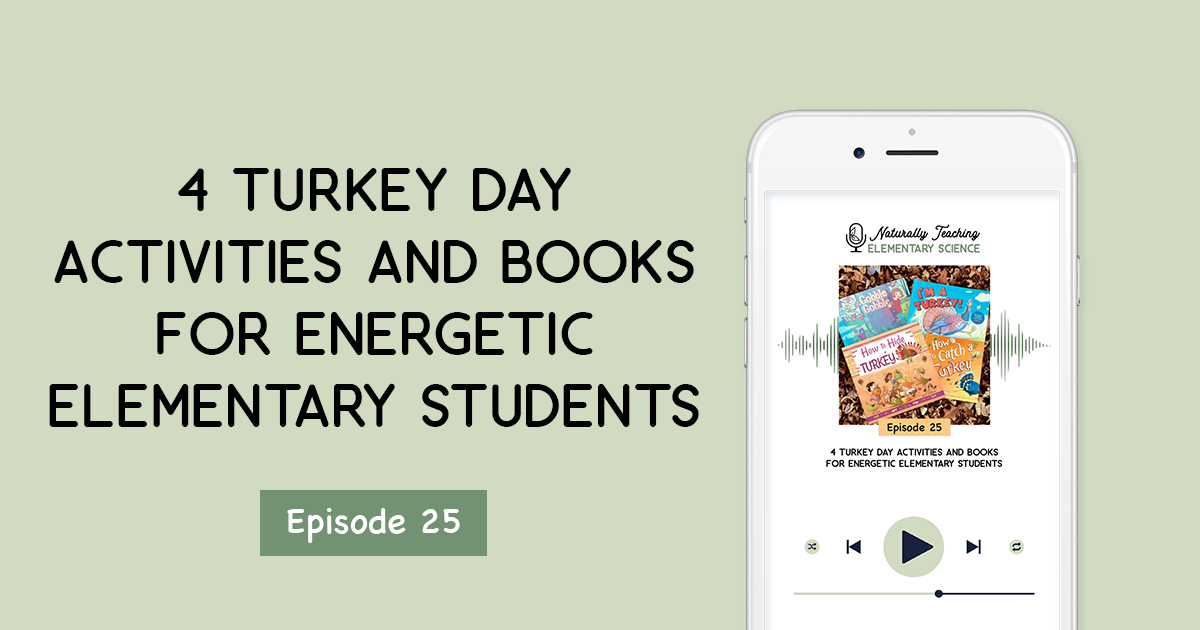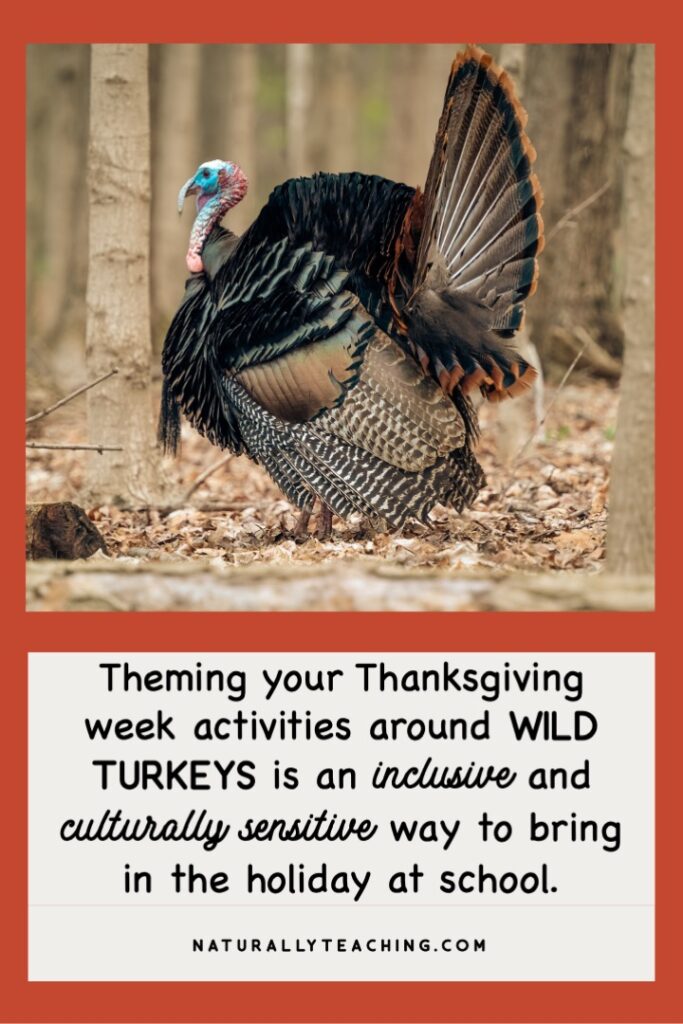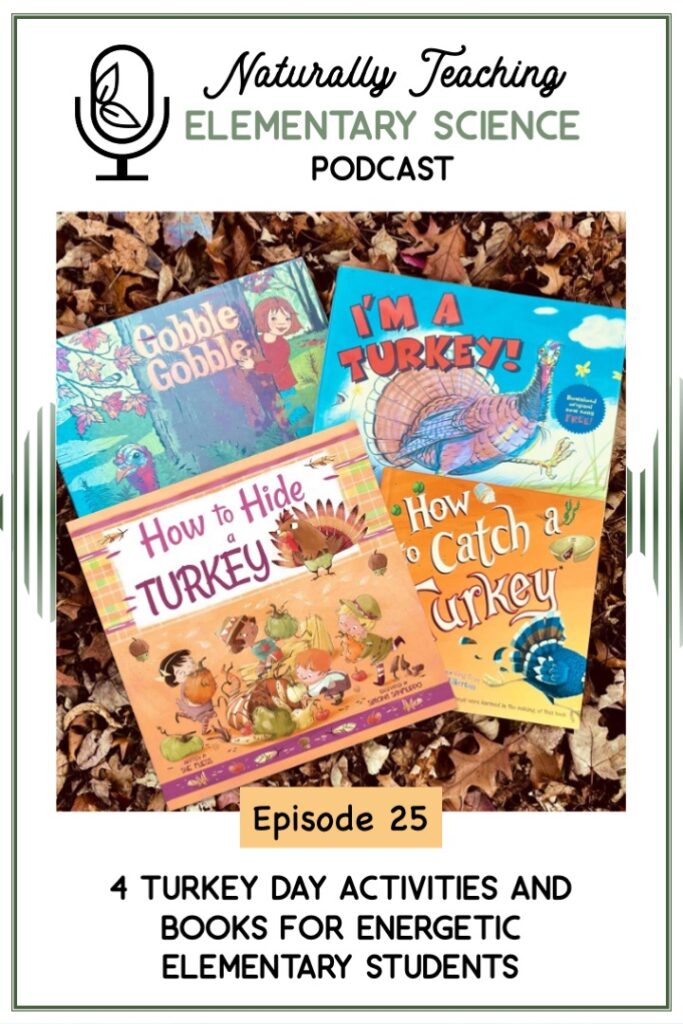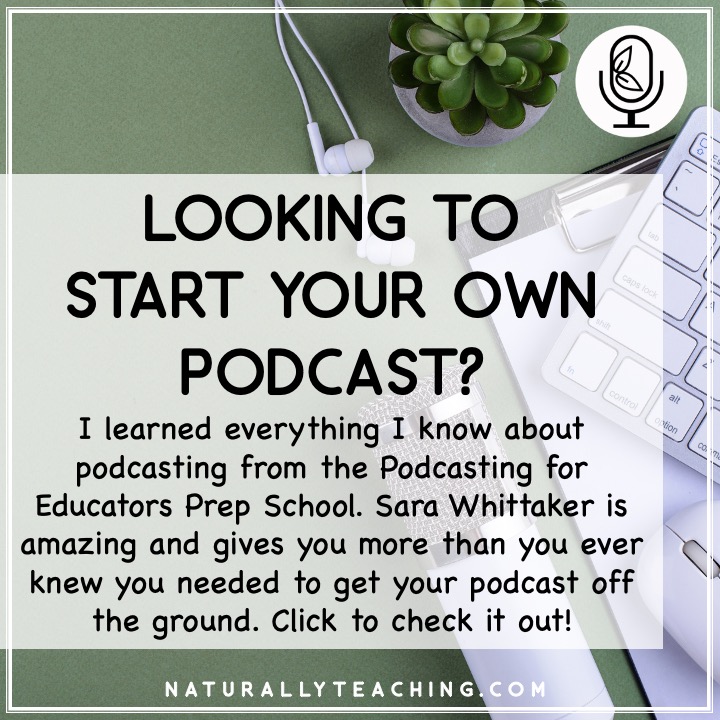Science
Frogs and Toads Together: Why do Amphibians Group Up?April 11, 2025


Affiliate disclosure: As an Amazon Associate, I may earn commissions from qualifying purchases from Amazon.com. This is at no extra cost to you. If you’d like to learn more, check out my disclaimers page.
The week leading up to Thanksgiving comes with a lot of energy from your students. They are excited about the idea of having extra time off, eating all the pie, and sleeping in. If you’re feeling overwhelmed finding fun ways to keep your students engaged, make sure to listen to this episode for some turkey day activities and books that could lighten your load.
In this episode, I share 4 picture books about turkeys and fun activity ideas to go along with them. I summarize Gobble, Gobble by Cathryn Falwell, How to Catch a Turkey by Adam Wallace and Andy Elkerton, I’m a Turkey by Jim Arnosky, and How to Hide a Turkey by Hope Aicher. I also share descriptions for turkey day activities including searching your school yard for turkey needs, creating a turkey obstacle course, a talking turkey Marco Polo tag game, and a nature craft to disguise turkeys.
When your students are anticipating an exciting event like a class party, a field trip, or an extended break, they are going to be wound up. So let’s get ahead of that energy and use it to further their understanding of your curriculum.
When you know that keeping your students on track is going to be a challenge, your answer is to take them outside for learning. This is a great time to plan a learning game or a free exploration experience where they can reinforce their learning but in a very active way or through play or exploration (just like the turkey day activities mentioned above). These methods will give your students an outlet for their crazy, misplaced energy but, when crafted well, can also help your students practice newly acquired skills or review something they’ve been working on.

Affiliate Disclosure
I only endorse things that I’ve personally used, come highly recommended by trusted peers, or I’ve done extensive research on. As an Amazon Associate, I may earn commissions from qualifying purchases from Amazon.com. This is at no extra cost to you, the commission is covered by the company.
I am recommending products that I think will be genuinely helpful and useful, and not because of the small commissions that I receive. Please only purchase items if you believe that they will help you achieve your educational goals. If you’d like to learn more, check out my disclaimers page.
Teaching science in elementary school is crucial for nurturing young minds. But as educators, finding the time and resources to create engaging lessons can be a challenge. That's where this podcast comes in.
Welcome to Naturally Teaching Elementary Science, the show dedicated to supporting elementary teachers in their quest to bring authentic and place-based science experiences to their classroom. I'm Victoria Zablocki, a certified elementary teacher turned outdoor educator. With over a decade of experience coaching teachers on effective science teaching methods, I'm passionate about making science accessible, understandable, and fun for educators and students alike.
Join me as we explore strategies for teaching science in elementary school with practical teaching tips, insightful interviews, picture book reviews, and more. Whether you've taught for a long time or just started your teaching journey, this podcast is your trusty resource for enhancing your science curriculum. So let's grow together.
Hey, everybody. Welcome back to the Naturally Teaching Elementary Science podcast. My name is Victoria Zablocki, and I'm your host.
So now that we're officially through Halloween, you can start thinking about Thanksgiving, or I'm sure that's what it feels like, right? We're in the middle of the holiday season here in the United States, which can be very overwhelming. Trying to find all the activities to keep your students engaged right before break can be a struggle.
So in this episode, I'm going to share with you some fun Turkey Day activities and books to help you the week of Thanksgiving in an effort to help lighten your load. Also, as we consider Thanksgiving, there's been a lot of news about the cultural side of the holiday. And if you're looking for a way to be inclusive of all and avoid cultural insensitivity, consider theming your weekly activities around turkeys and their natural history.
Wild turkeys are a very common bird in the continental United States, so most of your students are going to be familiar with them. And if not wild turkeys, you likely have domestic turkeys close by. So turkeys are a great theme that are inclusive of all of your students and history.
But before we get into the episode, I wanted to share a review from Emily off Spotify. Emily said, “I really love reading books to my class about nature and science concepts. I learned even more strategies to use to bring books alive. I love the idea of a book walk through the outdoor learning area.” Thank you, Emily, for your kind words. I'm so glad that you found new ways to bring literature to life with your students.
If you've been listening to the show and have found inspiration from myself or a guest, please take a few minutes to leave a review on whichever platform you listen on. Your feedback helps me make this podcast better for all listeners.
[2:49]
I wanted to start this episode with a teaching tip for the day. When your students are anticipating an exciting event like a class party, a field trip or an extended break, they are going to be wound up. You know it, I know it, we all know it's going to happen. Let's get ahead of that energy and use it to further their understanding of your curriculum.
When you know that keeping your students on track is going to be a challenge, your answer is to take them outside for learning. This is a great time to plan a learning game or a free exploration experience where they can reinforce their learning but in a very active way or through play or exploration. These methods will give your students an outlet for their crazy misplaced energy, but when crafted well, it can also help your students practice newly acquired skills or review something that you've been working on.
If you haven't taken your students outside for learning yet, check out episode 6, “Five Outdoor Education Safety Tips for Teaching in Nature” for advice on making your outdoor space safe, using natural boundaries, sharing safety expectations and rules, having your students go to the bathroom before going outside, and using a trail bag for your outdoor lessons. Let's get into these Turkey Day activities and books.
[4:04]
The first one is Gobble, Gobble by Cathryn Falwell. This rhyming book starts in the spring with descriptions of gobbling turkeys, breeding displays of male turkeys, and nesting habits of female turkeys. It then moves into the summer and the baby turkeys hatch, and they avoid a dog by flying.
Then in the fall, the baby turkeys are grown into adults, and then in winter they try to survive the cold. Then the book ends with a look into the main character's Turkey Journal with ideas from the author for Turkey activities that we could do with our students.
[4:38]
So, one of the fun Turkey Day activities that I suggest you could do with your class would be to look for turkey needs in your school yard. Ask your students if they think that your school yard would be a good habitat for turkeys and why, and if they don't remember what a habitat is, remind them that it's a place that gives an animal the food, water, shelter and space they need to survive.
You can show them their exploration space using natural boundaries like fence lines, tree lines, shrubs, wood chips, etc. and let them look around for food, water, shelter and space. While they're doing that, walk around and check in on them and see what they're finding and let them share with you.
Then after they've had time to look for the components of a turkey's habitat, come back together and have a class discussion on whether or not they think a turkey could survive in their school yard. What examples do they have of food? What about water? How about shelter? Do they think there was enough space? Those sorts of questions will help you understand what information they've gathered from your space.
And if you want to give your students a focus during this exploration time, you could give them a scavenger hunt. And if you want, you could check out my Turkey Needs scavenger hunt in my Teachers Pay Teachers Store. And it includes things to look for like feathers that fell off the turkey that they use to fly and stay warm with, small animals that they could eat, trees to sleep in, water to drink, grass to eat, leaves to make nests, and more.
[6:02]
Book number two is How to Catch a Turkey by Adam Wallace and Andy Elkerton. And this silly book is becoming a Thanksgiving classic for teachers and comes with a lot of potential.
The story is about a turkey that is brought to a school to take part in their Thanksgiving play. It gets stage fright and runs away from the kids and the staff. It then flies through the science room, runs through the cafeteria, weaves through the library maze, ducks under desks and chairs, hides on the playground, gets tangled up in jerseys, and then ultimately ends up on stage, overcomes its stage fright, and then ends up being the school's mascot.
[6:39]
So one of the Turkey Day activities to go along with this book would be to create an obstacle course for your students. And I've got two different ideas for you. Whichever theme you go with, you're going to want to use cones, ropes, or lines from a soccer field to use as your outside boundaries so that your students know where they should be running for the obstacle course. You'll also want to add starting and ending lines to either obstacle course option.
So the first obstacle course theme that I would suggest would be a book retelling experience. So you could provide obstacles that follow along the journey of the turkey in the book. After the start line, you could have plastic or cardboard milk jugs or water jugs to act like the beakers that the turkey had to fly through in the science room. And you could have your students weave in between them, or you could have them knock them over like the turkey did in the book.
Then you could have a couple of tables or you could intentionally set up your obstacle course so that it goes through picnic tables outside and those could act as the cafeteria. Next, you could put down ropes to create a maze for your students to weave through like the bookcases in the library. Then you could put some chairs for the classroom full of desks and chairs from the story.
Next, you could place jump ropes for the play yard and have your students jump five times with the jump ropes. Then you could include a pile of old t-shirts or you could ask your physical education teacher to borrow jerseys and have those in a pile. And as your students go by the pile, they could jump in them, grab one and then put them on before running to the end line, which will act as the stage. Then once they reach the stage, have them do a signature dance move that they would use if they were the new mascot in their new gear.
The second obstacle course theme would be an obstacle course for a wild turkey in nature. So what kinds of things would a turkey face in nature that you could use in an obstacle course? For some inspiration, you could check out my article “Talking About Turkey Facts: 10 Things to Know Before Thanksgiving”. That article is created from a list of 10 frequently asked questions about turkeys, including things like, can wild turkeys swim? What's the difference between a wild turkey versus a domestic turkey? How many turkeys are there in a flock? What are turkey needs? Where do turkeys live? Where do turkeys build their nests? And more.
So some ideas for obstacles for a wild turkey obstacle course would be a blue tarp for them to “swim” across. You could have them create a ground nest out of leaves and sticks. You could choose a student to pretend to be a fox that's chasing the other kids around as turkeys. You could have your turkeys jump up onto something strong and wide like a milk crate to represent turkeys flying into trees to roost for the night. You could have them gather food like acorns or other seeds by scratching the ground with their feet. And you could have them gather together as a flock at the end line.
[9:37]
Book number three is I'm a Turkey by Jim Arnosky. And this rhyming book has a simple storyline about being a part of a large flock of turkeys. The main turkey talks about its relatives, how they talk to each other, the weight of full-grown turkeys, possible predators, and how turkeys are easily flustered.
A fun perk to this book is that there is a song to go along with it that you can play from Jim Arnosky's website. So you could read the book and then you could listen to the song afterwards.
[10:05]
So one of the main focuses of this book is talking turkey. The author says that multiple times. And he uses words like “putt”, “peat”, “squawk”, “squabble”, and “gobble” to describe ways that the turkeys talk to each other. So you could go outside and play a game of Marco Polo using turkey words. So you'll select an open space with no dips, holes, or tripping hazards, and you'll pick one student to be the “it” student.
Have them make a turkey sound while keeping their eyes closed, and then all the other turkeys will respond with the turkey sound so that the “it” person can try to tag them. While you're playing though, have your students walk for this game, as it's dangerous for the “it” person if everyone is trying to run around them while their eyes are closed. Try not to make the space too large either, or it will be too challenging for your “it” student to be able to find someone to tag.
This will create a lot of giggles, and your students may even find themselves gathering together in a flock in one of the corners of the play space, similar to how turkeys gather together in the fall for survival. A nice little side perk if it happens.
[11:07]
Book number four is How to Hide a Turkey by Hope Aicher. And this rhyming book is a just-for-fun sort of turkey day book, but it doesn't make it any less awesome. Its funny storyline has the characters being followed by a turkey, and them trying to figure out how they can disguise the turkey so that they can keep it. And in a surprising twist, they end up disguising themselves as turkeys so that the turkey blends in.
This book includes some suggestions for crafts built into the storyline, including a turkey mask and a simple turkey tail belt made out of paper, tape, string and coloring utensils.
[11:41]
And as a twist on the plot, you could print your students pictures of turkeys and take them outside with glue and scissors and give them a chance to disguise their turkeys with things they find in nature. So instead of disguising themselves, they're going to disguise their turkey.
So to help protect nature and your students, make sure that they only use things that are no longer attached to plants, are no longer alive, and could actually stay glued or taped onto their paper. Give them an exploration space using natural boundaries, like we talked about earlier, and then they can look in that space for things to disguise their turkey.
And then it would be helpful if you planned this activity by picnic tables, a sidewalk, or you bring clipboards out, and that'll give your students a good base to be able to glue and push their items down so that they don't fall off.
[12:27]
So in a nutshell, today we talked about four turkey day activities and books to help with that extra energy that comes right before a break. So first, we talked about Gobble, Gobble by Cathryn Falwell, and how you could look for turkey needs outside in your schoolyard. Then we talked about How to Catch a Turkey by Adam Wallace and Andy Elkerton, and we talked about creating an obstacle course.
Then we talked about I'm a Turkey by Jim Arnosky, and how you could play a Marco Polo type tag game. And last, we talked about How to Hide a Turkey by Hope Aicher. And with this one, we talked about a craft you could do after listening to this story.
And don't forget, if you're looking for some background knowledge about turkeys, head over to my article “Talking About Turkey Facts: 10 Things to Know Before Thanksgiving”. And if you need a scavenger hunt for turkey needs, don't forget to check out mine on Teachers Pay Teachers.
And I want to thank you for taking the time to listen today. I know you're busy, and I truly appreciate the time you take to tune in. If you have any questions, wonderings, or turkey day activities or books that you use, get hold of me on Instagram at Naturally.Teaching, or you can email me at victoria@naturallyteaching.com. And don't forget to check out the show notes for this episode at naturallyteaching.com/episode25. Thanks again for joining me today. And until next time, keep exploring, keep learning, and keep Naturally Teaching.
Thank you so much for tuning in to today's episode of the Naturally Teaching Elementary Science podcast. I hope you found it informative, inspiring, and full of actionable insights to enhance your science teaching journey. Connect with me on social media for more updates, science tidbits, and additional resources.
You can find me on Instagram and Facebook at Naturally.Teaching. Let's continue the conversation and share our passion for elementary science education together. Don't forget to visit my website at naturallyteaching.com for all the show notes from today's episode. If you enjoyed today's episode, please consider leaving a review on your favorite podcast platform. Your feedback helps me improve and reach more educators just like you. Thank you again for listening, and until next time, keep exploring, keep learning, and keep naturally teaching.


0